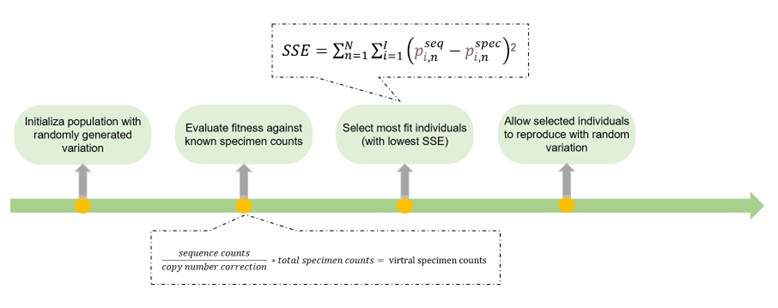Detection of Plant Nematodes by High-Throughput System
At present, the identification of plant nematodes mainly relies on morphological identification methods. However, it is estimated that there are more than 1 million species of nematodes. At the same time, the size of nematodes is small, so the identification work is time-consuming and laborious. With the rise of molecular biology identification technology, especially the wide application of the second generation of high-throughput sequencing in the ecological analysis of bacteria, fungi, and protozoan communities, studies using high-throughput sequencing technology have emerged in the field of nematode analysis.
Lifeasible provides services to customers worldwide covering the detection of plant nematodes by the high-through system, including microfluidic digital PCR, optical microfluidic PCR, and single-cell microfluidic PCR. Our platform is equipped with advanced facilities and professional experts to support related research. Here we provide various services according to customer needs.
Detection of Plant Nematodes by Meta-Genetic Research
- Meto-genetic approaches identify and quantify a specie's or group's relative abundance within a population of organisms. This technique can also target 16S or 18SrRNA genes.
- Meta-genetics can be used to define the taxonomic plant nematodes by a high-performance sequencing application focusing on the target nucleotide sequence.
 Fig. 1 Schematic flowchart of Genetic Algorithm.
Fig. 1 Schematic flowchart of Genetic Algorithm.
- Lifeasible provides detection of plant nematodes with high-throughput of meta-genetic research, including library preparation, a barcode coupled with the targets for DNA fragments, clonal amplification, HTS sequencing, and other phases.
Detection of Plant Nematodes by rRNA Genes
- High-throughput sequencing of rRNA genes is used to classify groups and species of plant nematodes.
- We provide detection of plant nematodes with high-through of rRNA genes. An iterative genetic algorithm is employed to estimate the copy amount of the rRNA gene under different conditions. The HTS alone allows for quality estimates of populations, but this enables the quantification of various populations. The species and distribution of nematodes are analyzed using HTS as a graphic illustration of mitochondrial genes expressing cytochrome b.
Detection of Plant Nematodes by High-Throughput System with Bioinformatics Analysis
- As the number of sequenced samples increases, the cost of basic analysis decreases on a sample-by-sample basis. On this basis, sophisticated analysis is essential to process all the data, which requires a high degree of bioinformatics capabilities.
- We provide detection of plant nematodes with a high-through system with bioinformatics analysis. Bioinformatics pipelines are established concurrently with HTS development to help solve the problem of mega data analysis.
Lifeasible provides cost-effective, high-quality, and comprehensive services to our clients worldwide. We provide our clients with direct access to our experts as well as prompt response to their inquiries. If you are interested in our services or have any questions, please feel free to contact us or make an online inquiry.
For research or industrial raw materials, not for personal medical use!
 Fig. 1 Schematic flowchart of Genetic Algorithm.
Fig. 1 Schematic flowchart of Genetic Algorithm.